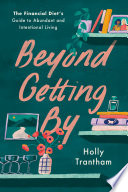

The book emphasizes the significance of having a growth mindset as the foundation for personal and professional development. It argues that adopting a mindset that embraces challenges, learns from criticism, and finds inspiration in others' success is crucial for moving beyond mere survival. The author discusses how a fixed mindset can limit one's potential and lead to stagnation. By cultivating a growth-oriented perspective, individuals can unlock opportunities for innovation, creativity, and resilience. The book provides practical strategies for shifting one's mindset, including self-reflection, goal setting, and surrounding oneself with supportive influences.
Continue readingThe author highlights the necessity of establishing clear and actionable goals as a means to navigate life's complexities. The book outlines a framework for effective goal-setting that includes defining short-term and long-term objectives, ensuring they are specific, measurable, achievable, relevant, and time-bound (SMART). The author shares techniques for maintaining focus and motivation, such as breaking down larger goals into manageable tasks and regularly reviewing progress. By setting clear goals, individuals can create a roadmap that guides their decisions and actions, ultimately leading to greater fulfillment and success.
Continue readingResilience is portrayed as a vital trait for overcoming obstacles and thriving in a fast-paced world. The book discusses various strategies for building resilience, such as developing emotional intelligence, fostering a support network, and practicing self-care. The author shares personal anecdotes and case studies that illustrate how resilient individuals navigate setbacks and emerge stronger. The key takeaway is that resilience is not an innate quality but a skill that can be cultivated through practice and intentionality. By embracing challenges and learning from failures, individuals can develop a robust resilience that propels them forward.
Continue readingThe book addresses the inevitability of change and the importance of embracing uncertainty as a catalyst for growth. The author argues that resisting change can lead to stagnation, while embracing it opens doors to new opportunities. Practical advice is provided on how to adapt to changing circumstances, including maintaining a flexible mindset, seeking out new experiences, and continuously learning. The author emphasizes that those who can navigate uncertainty with confidence are better positioned to seize opportunities and innovate. By reframing change as a positive force, individuals can enhance their adaptability and thrive in dynamic environments.
Continue readingThe author underscores the significance of building and nurturing strong relationships as a cornerstone of success. The book discusses the importance of networking, collaboration, and mentorship in both personal and professional contexts. It provides actionable insights on how to cultivate meaningful connections, such as active listening, showing appreciation, and being genuinely interested in others. The author argues that strong relationships not only provide support during challenging times but also open doors to new opportunities and perspectives. By investing in relationships, individuals can create a robust support system that enhances their overall well-being and success.
Continue readingThe concept of lifelong learning is central to the book's message. The author advocates for a commitment to continuous education and skill development as a means to stay relevant in an ever-changing world. The book discusses various avenues for learning, including formal education, online courses, workshops, and self-directed study. It encourages readers to embrace curiosity and seek out new knowledge and experiences regularly. The author emphasizes that adaptability is closely tied to learning, as those who are willing to learn and grow are better equipped to navigate challenges and seize opportunities.
Continue readingThe book concludes by exploring the profound impact of having a clear sense of purpose. The author argues that a well-defined purpose serves as a guiding light, motivating individuals to pursue their goals with passion and determination. The book provides exercises for identifying one's purpose and aligning daily actions with that purpose. It emphasizes that a strong sense of purpose not only enhances personal satisfaction but also contributes to greater resilience and the ability to overcome obstacles. By living purposefully, individuals can create a more meaningful and fulfilling life.
Continue reading